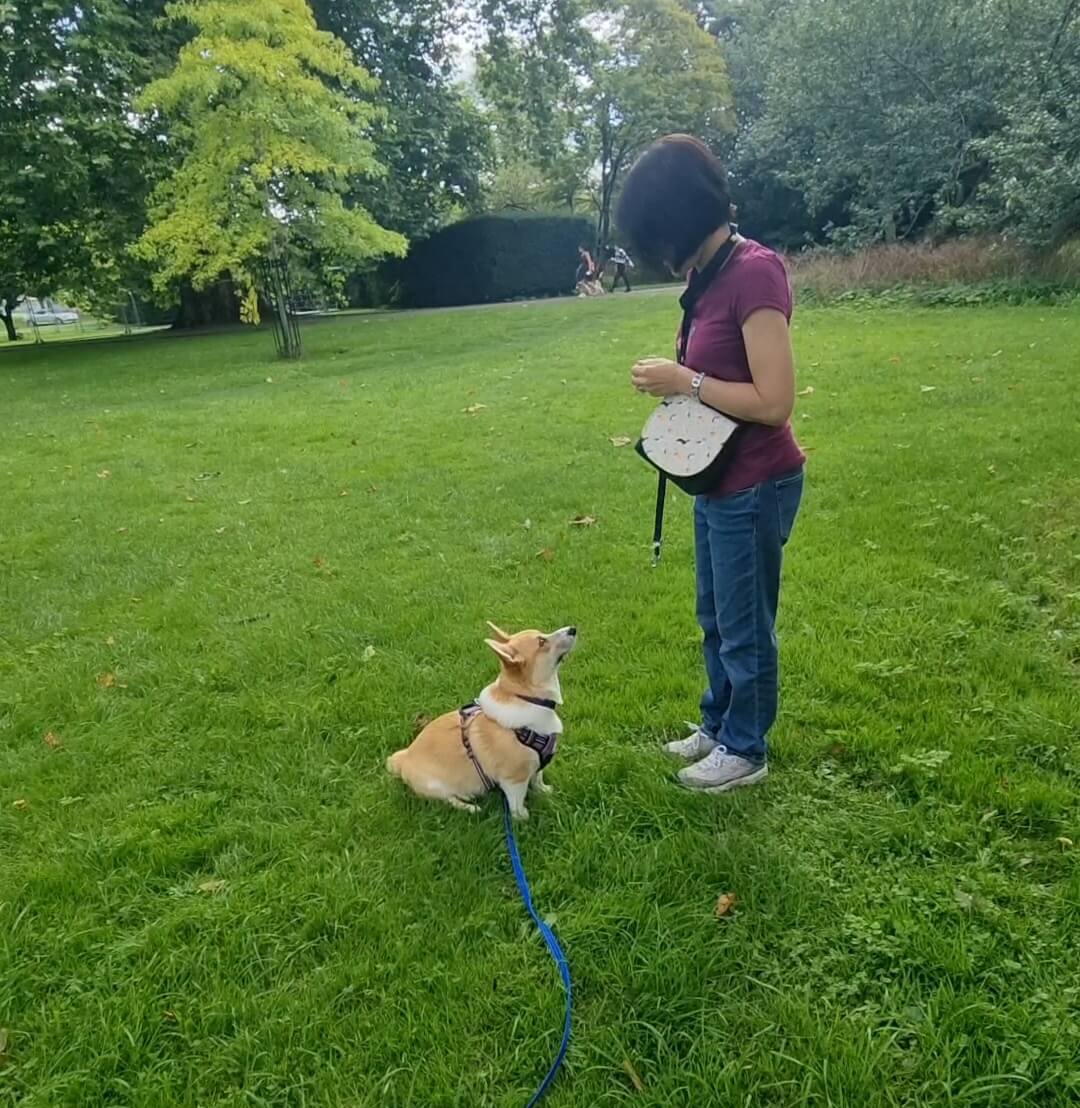Dog to Dog Reactivity
Overview
Package of 3 1:1 classes for dogs that are reactive around other dogs held at our specially made classroom in Cirencester.
Dog to dog reactivity can be such a difficult problem to cope with and can lead to you feeling anxious and not looking forward to walks or avoiding them altogether. For many people, owning a dog is all about getting out and about and enjoying the outdoors, it can therefore be debilitating for the dog and the owner.
There are many causes for dog to dog reactivity, it can be a result of fear, under socialisation, frustration or even pain. Often this isn’t a result of a lack of obedience training but a result of the dog’s emotional state, even the best trained dog may still struggle with reactivity.
Because of the nature of this difficulty, often 3 1:1s to start with are necessary to get you and your dog on the right path. There are several training exercises that can be implemented to help manage your dog’s behaviour e.g. teaching your dog to focus on you around distractions, but training is balanced with working with your dog to feel more positive about other dogs in a step by step way before working with the dog outside or around their triggers.
The aims of 1st session are to establish the right environment and training foundations. At our first session it is often required to establish why your dog might be reactive towards others. We discuss any changes to their home environment that may help and start training to help you and your dog become a team.
The aim of the 2nd session is to work outside with very life like stuffed dogs to work on reactivity at a distance and to give you plenty of practice with how to manage situations.
The aim of the 3rd session is to either repeat work with stuffed dogs, reducing distance or taking the newly learned skills ‘on tour’ in more realistic situations to set you up for success in the future.
If your dog is unable to engage with you, you struggle to get there attention or they struggle to take food outdoors (this is a good measure of your dog’s emotional state, if they can’t take food they are usually finding the environment too difficult) then I recommend looking at doing the loose lead skills 1:1 course first to get your dog to a point where we are able to work with them outdoors.
It is necessary for you to work with your companion in between sessions to get the full benefit and to see long term improvement i.e. lots of practice. The aim is for you to be able to walk your dog with confidence and enjoy walks again. Your dog may never be a socialite with other dogs but the more positive, well managed experiences your dog has, the more improvement you will see. We often do further sessions to build on progress.
Session outlines:
Session 1 – Indoor session
- Review history taking (looking at underlying reasons, daily routine etc)
- Dog body language and thresholds
- Review walking equipment (reaction to equipment being put on, adjustments that need to be made etc)
- Review motivations – toys / types of food etc that we can use in training
- Review managing triggers in the environment
- Leaving the house calmly
- Introducing a marker cue
- Series confidence building, attention, engagement and team building exercises
- Introducing loose lead walking (calm lead walking is a foundation skill to reducing reactivity on a walk)
- Homework given
Session 2 – Indoor session progressing to outdoors by our classroom (dog dependent)
- Series confidence building, attention, engagement and team building exercises
- Introduction of fake dogs at a distance to practice skills
- Homework given
Session 3 – Outdoors by our classroom (dog dependent)
- Series confidence building, attention, engagement and team building exercises
- Loose lead walking practice outside
- Either reducing distance with fake dogs or adding real life dogs, adding following or parallel walking where appropriate or taking the newly learned skills ‘on tour’ in more realistic situations to set you up for success in the future
- Homework given – follow up sessions are also available to book to continue to build on these skills
50% off online Fundamentals video course
Free ongoing support through Succeeding Together.
Invitation to social walks and group classes where appropriate.
Please see the video below for more information on what to expect and session structure:
Who is this course for?
Dog who struggle with dog to dog reactivity (lunging, barking, growling etc)
How much is the course?
£140 for the 3 1:1 sessions
I recommend booking sessions 2 weeks apart to give you time to practice
Where are the classes?
Our specially made classroom (please note this is up a flight of stairs) is located inside Apollo Commercial Interiors building, next door to Ride 24/7 and opposite Buildbase:
Unit C, Apollo Court, Love Lane Industrial Estate, Cirencester.
Availability
Get in touch to book
Whether or not you decide this is right for you and your dog, it's important to use only reward based methods, beware of 'quick fixes' that are aimed at stopping the reactive behaviour, rather than working through the underlying cause. They can be very detrimental in the long term and can lead to serious consequences. Don't be afraid to question a trainer/behaviourist about their methods.
Book a class
Have a question or want to book some classes in? Don’t hesitate to get in touch, I don’t bite!








